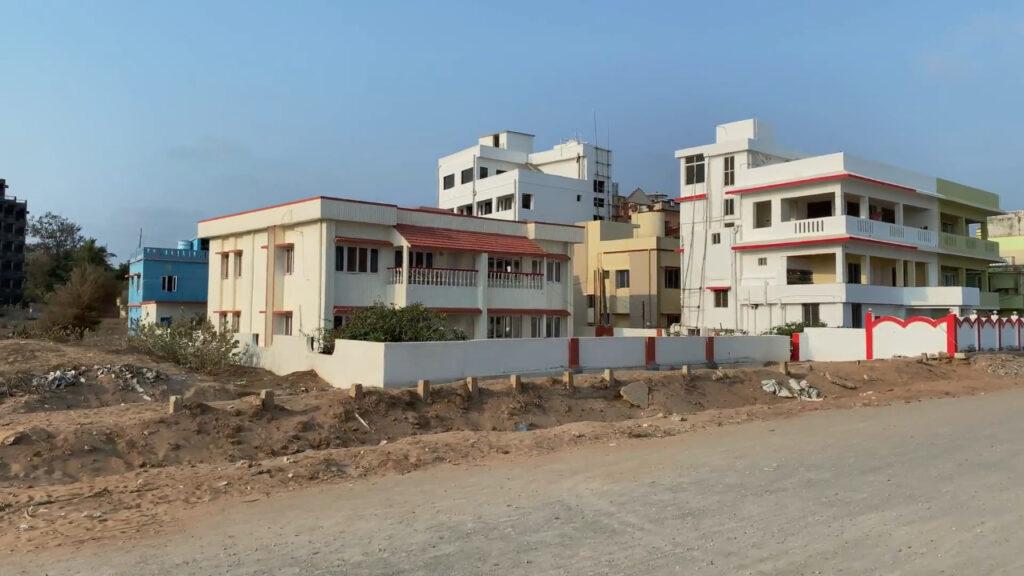Puri offers travelers a amazing of experiences, from the exquisite beauty of the coastline to the spiritual ambiance of the Jagannath Temple. One of the most sought-after experiences is staying in a sea-facing hotel that allows guests to wake up to the soothing sounds of waves and stunning ocean views. The sea-facing room rates in Puri hotels, how to find the best deals, and tips to enhance your beach stay.
Top Puri Tour Packages List
- Puri tour plan for 2 days
- Senior Citizen Tour
- Biraja Temple Tour
- Puri Family Tour Package
- Puri Tour Package for Couple
- Puri Tour Plan for 4 days
- Best of Puri in 5 days tour
- 6Night / 7Days ( 48240 / 2 Person )
Why Choose Sea-Facing Hotels in Puri?
When visiting a beach destination like Puri, the choice of accommodation greatly influences the overall experience. Sea-facing hotels offer unique advantages:
- Unparalleled Views: There’s nothing like waking up to the soft sound of waves crashing against the shore and the breathtaking sight of the sunrise over the ocean. Sea-facing room provides a front-row seat to nature’s beauty.
- Enhanced Relaxation: Calming ambiance of the beach promotes tranquility. Whether you’re lounging on your balcony or enjoying a sunset stroll on the shore, the beach’s proximity adds to your relaxation.
- Convenience: Staying in a sea-facing hotel often means easier access to the beach. Save time and energy on travel by simply stepping out of your hotel and onto the sand.
- Unique Activities: Being near the waterfront means you can engage in various activities such as water sports, beach volleyball, or simply sunbathing, all just a stone’s throw away from your accommodation.
Room Types and Rates
The range of sea-facing rooms in Puri varies widely depending on the hotel’s luxury level, facilities, and location. Below, we break down the types of sea-facing accommodations you might find in Puri, along with general price ranges.
You May Read
1. Standard Sea-Facing Rooms
- Description: These rooms usually come with basic amenities, a comfortable bed, an attached bathroom, and a view of the sea.
- Rates: Prices range from INR 2,500 to INR 4,500 per night.
2. Deluxe Sea-Facing Rooms
- Description: More spacious than standard rooms, deluxe options may offer additional amenities like a mini-fridge, tea/coffee maker, and a better view.
- Rates: Expect to pay between INR 4,500 to INR 8,000 per night.
3. Luxury Sea-Facing Suites
- Description: These high-end rooms often come with separate living areas, premium bedding, and luxurious bathroom facilities. They might also include services like in-room dining and spa facilities.
- Rates: Rates can vary from INR 8,000 to INR 15,000 per night or even higher depending on the hotel’s prestige.
4. Family Sea-Facing Rooms
- Description: These rooms are tailored for families and offer spacious accommodations with multiple beds and additional amenities.
- Rates: Prices typically fall between INR 5,000 and INR 10,000 per night.
5. Cottages and Villas
- Description: For those seeking a more home-like atmosphere, many hotels offer beach cottages or villas that provide privacy, outdoor space, and a more residential feel.
- Rates: Prices usually start from INR 10,000 and can go up to INR 30,000 based on the facility and location.
Factors Influencing Sea-Facing Room Rates
Several factors can influence the price of sea-facing rooms in Puri. Understanding these elements can help you find the best deals:
- Seasonality: Puri experiences peak tourist seasons, primarily during festivals, holidays, and the summer months. During these times, rates can be significantly higher due to increased demand. Visiting during the off-peak season can lead to substantial savings.
- Advance Booking: Booking your stay well in advance can secure better rates, as hotels often offer early bird discounts. Last-minute bookings might lead to inflated prices and fewer available options.
- Location: Hotels located directly on the beach typically charge more than those that are slightly farther away. Extra cost often translates to unmatched views and easier beach access.
- Promotional Offers: Keep an eye out for seasonal promotions, group packages, or loyalty discounts that can make your stay more affordable.
- Length of Stay: Many hotels offer reduced rates for extended stays (e.g., weekly or monthly rates). If you plan to stay longer, inquire about special pricing.
- Booking Platforms: Various online platforms provide special pricing and discounts. Official hotel websites may offer exclusive deals compared to third-party booking sites. It’s worth checking both to find the best rates.
Finding the Best Deals for Your Beach Stay
Navigating the myriad of hotel options in Puri can be daunting, especially when trying to score the best deals on sea-facing rooms. Here are some effective strategies to maximize your savings:
- Use Price Comparison Sites: Websites and apps that allow you to compare prices from different booking platforms can help you find the best deal available for your desired dates.
- Join Loyalty Programs: Many hotel chains and booking sites offer loyalty programs that provide exclusive discounts, member-only rates, and additional perks.
- Check Social Media and Newsletters: Follow hotels and travel agencies on social media and subscribe to newsletters. They often announce flash sales, limited-time promotions, or special offers for followers.
- Contact Hotels Directly: Once you’ve identified a hotel with the desired amenities, reach out directly to inquire about any unpublished rates or flash promotions. Sometimes, hotels offer better rates for direct bookings to avoid paying commissions to referral sites.
- Travel Packages: Consider booking as part of a travel package that includes flights, accommodation, and possibly meals or local tours. Could lead to significant savings compared to booking each item separately.
- Off-season Travel: If you are flexible with your travel dates, consider visiting during the off-peak season. Weather remains pleasant most of the year, but you can take advantage of lower rates and fewer crowds.
- Use Discounts: Check if you qualify for any discounts (AAA, senior, military, etc.) as many hotels honor such programs.
Planning Your Beach Stay in Puri
Once you’ve settled on the ideal sea-facing hotel and secured your booking, it’s time to plan the rest of your trip. Puri offers numerous attractions and activities that can make your stay truly memorable:
- Visit the Jagannath Temple: Visit to Puri wouldn’t be complete without exploring the famous Jagannath Temple, an architectural marvel and a significant pilgrimage site for devotees of Lord Jagannath.
- Relax on Puri Beach: Spend lazy afternoons soaking up the sun on Puri Beach. Engage in water sports or simply enjoy a peaceful evening watching the sunset.
- Explore Chilika Lake: Consider taking a day trip to Chilika Lake, Asia’s largest brackish water lagoon. Boat rides and bird-watching opportunities are unparalleled here.
- Taste Local Cuisine: Don’t miss out on the local Odia cuisine, especially the seafood. Dining at beachfront shacks can be a delightful experience.
- Participate in Local Festivals: If your travel dates align, participate in local festivals such as the Rath Yatra, when the chariots of Lord Jagannath are paraded, or the Beach Festival, which showcases traditional music, dance, and crafts.
- Shopping: Explore local markets for souvenirs, such as traditional handicrafts, Puri’s renowned pattachitra art, and intricate jewelry.
Stay in one of Puri’s sea-facing hotels can be a truly rejuvenating and memorable experience. Whether you are seeking a romantic getaway, a family vacation, or a solo retreat, the charm of the ocean coupled with the essence of Puri is sure to leave a lasting impression. By knowing the different types of accommodations available and the factors influencing room rates, you can make informed choices that ensure you get the best value for your stay.
Leveraging the various tips mentioned will enable you to find unbeatable deals and maximize your beach vacation experience. Don’t forget to check out purihotels.in for bookings and stay updated on the latest promotions that can elevate your beach getaway experience in Puri.







